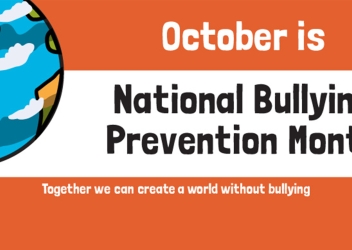Research In Action
Research In Action
Breadcrumb

Moderator's note: This year, the Center for Violence Prevention at Children’s Hospital of Philadelphia celebrates 10 years of programming and research. Co-Directors Drs. Joel Fein and Stephen Leff reflect on the work accomplished in the Center over the last decade in the latest post for CHOP's Cornerstone blog. Read an excerpt of the blog post below; click here to read the full post.
The Center for Violence Prevention (CVP), formerly the Violence Prevention Initiative, was established at CHOP in 2013. What propelled its creation?
After the mass shooting at Sandy Hook Elementary School in December 2012, CHOP’s then Chief Executive Officer Steven M. Altschuler, MD made the decision to put resources into violence prevention. As a top children’s hospital in the nation, he felt it was CHOP’s responsibility to develop a comprehensive initiative that could not only be influential locally to our patients and community, but also serve over time as a national model for hospital-led violence prevention programming, training, and research. He made the decision to bring together work that was already being done at CHOP under one umbrella, which is how the Center for Violence Prevention, formally the Violence Prevention Initiative, was established.
Since violence is rarely experienced in isolated ways, our Center brings multimodal prevention and intervention programming to youth and families at multiple touchpoints across clinical, school, and neighborhood settings throughout a child’s lifespan. CVP provides the infrastructure for CHOP-based programs, services, and research.
Today, our multidisciplinary faculty and staff conduct research, help shape policy, engage community partners, and create, implement, and refine evidence-based interventions. CVP applies a trauma-informed, anti-racist lens to community programs and activities as well, promoting community resilience and supporting diversity of staff and faculty.
What are CVP’s pillars, and how has research conducted in the Center evolved over the years?
CVP started with four focus areas that we call “pillars,” and these areas have grown to include six pillars. Our expansion and refinement of programs is always based on information that we gather from our hospital and community stakeholders. Each pillar has its own directors who lead multiple aspects of the work. CVP’s current pillars are Aggression and Bullying Prevention, Community Violence and Trauma Support, Intimate Partner Violence Prevention, Suicide Prevention, Gun Safety, and Professional Development and Training.
Over the years, we have progressively integrated our research and program activities so that they learn from and support each other. Our Center’s research efforts include quality improvement, mixed methods research, implementation science, secondary data analyses, and clinical trials.
CVP integrates community-based participatory research (CBPR) methods as much as possible to elevate each area to the next developmental stage. Our CBPR approach combines evidence-based strategies with the voice and feedback of those most impacted by our programs. In this manner, we know that our programs represent best practice and are uniquely designed to meet the needs of our youth and families.
CVP scholars and associates represent 17 divisions and departments throughout CHOP. How does this approach inform your research?
Our CBPR approach involves violence prevention stakeholders throughout the CHOP enterprise. The diversity in disciplines of our faculty and staff, and the neighborhood and community connections that they offer, provide unique insights as we implement and evaluate programs both inside and outside of hospital walls. This approach helps our experts more accurately inform and advise policymakers and other key constituents. Through CVP, our scholars and associates can stay connected to each other and informed about each other’s progress through meetings and newsletters.
It’s clear that CVP has achieved many major milestones throughout 10 years of research and programming. Tell us about one or two examples that stand out to you.
There are many noteworthy milestones that CVP has achieved over the years, which would not have been possible without the dedication and hard work of our staff. Many of these examples are highlighted in our 10-year anniversary report, The Center for Violence Prevention: The First Decade and Beyond.
We are happy to share a couple examples from our two largest pillars:
- Bullying and Aggression Prevention: Our team has worked with more than 50 schools in the School District of Philadelphia since 2013. CVP’s bullying prevention programming has been associated with a 70% success rate at decreasing aggression and improving problem-solving, empathy, and self-confidence for intervening. We also had the first program in the country to decrease relational aggression among girls attending urban schools, in part by teaching problem-solving skills while giving leadership opportunities to the formerly aggressive girls so that they could demonstrate their new positive skills to classmates.
- Community Violence and Trauma Support: Our team offers intensive case management and mental healthcare to violently injured and traumatized youth and their families. It has been rewarding to see youth who have been through our programs become leaders for our trauma-informed youth groups and in family-serving systems outside of CHOP. One focus of our research is to capture the voices of our clients and front-line providers to learn what best serves families and apply that knowledge to program improvements.
To read the full blog post, click here.




